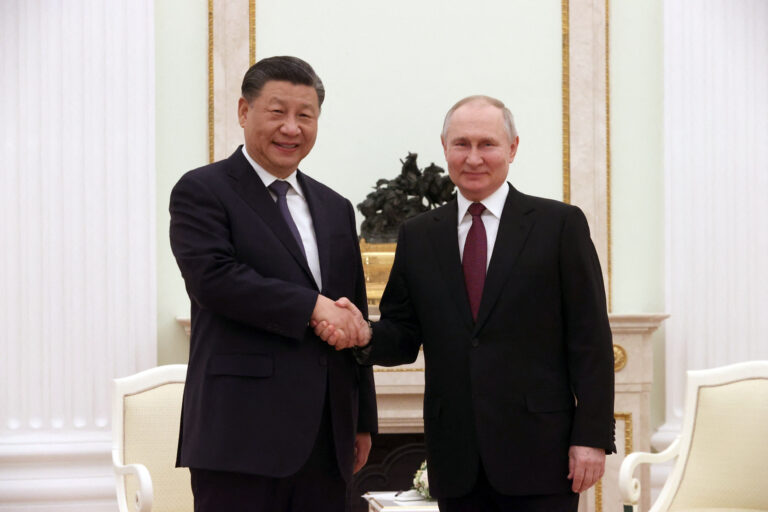Following Russia’s invasion of Ukraine on February 24, 2022, which saw Russia largely shut out of the international financial system, the Chinese renminbi (RMB) is increasingly being used in international transactions by China’s trading partners, particularly Russia.
As of December 2023, the yuan accounts for roughly one-third of Russian trade.
“The China-Russia relationship gives China an opportunity to really test de-dollarization on a larger scale,” said Vincent Drouard, director of global macro strategy at financial services firm StoneX Group. Newsweek.
According to a Nikkei analysis, China’s international transactions denominated in yuan exceeded those denominated in dollars for the first time in the first quarter of 2023.
The renminbi is also gaining momentum in trade with third countries. The Bangladeshi government has approved a payment of $318 million in renminbi to Russia’s Rosatom State Atomic Energy Corporation for the construction of the Rooppur Nuclear Power Plant.
The currency is also seeing growing use in the Middle East, Africa and Latin America, where in November China and fellow BRICS member Saudi Arabia signed a $7 billion currency swap agreement.
“Achieving strategic independence is a guiding principle for China,” Drouard said, stressing that the Russian situation shows that reducing reliance on the dollar is important to avoid U.S. influence and retaliation. “You could see Russia as a catalyst.”
Still, the yuan still accounts for a small share of global payments, rising to 4.5% in March, while the U.S. dollar remained stable at around 47%.
Although Russian President Vladimir Putin predicted last year that the US dollar would experience an “irreversible” decline in its importance, the currency continues to dominate: in the fourth quarter of 2023, the US dollar will account for 58.41% of the global reserve allocation.
According to data from the International Monetary Fund, the euro came in second with just under 20 percent, while the yuan came in sixth with 2.29 percent.
Last year, the Russian central bank introduced different reserve ratio requirements targeted at the currencies of “unfriendly” countries in response to tough international sanctions: banks with liabilities in these currencies must hold reserves of 7.5%, while the requirement for other foreign currencies is just 5.5%.

Sergey Karupkin/AFP via Getty Images
China’s efforts to boost the value of its currency come at a time when it is rapidly stockpiling resources such as gold, oil and copper, and analysts say they are also aimed at strengthening its autonomy.
Drouard compared the strategy to the US’s creation of the Strategic Petroleum Reserve, which recognised the risks of dependence on Middle Eastern oil.
Trade between China and Russia has surged since the invasion of Ukraine, hitting a record $240 billion in sales last year. But business between the two countries has slowed due to secondary sanctions imposed by the Biden administration targeting financial flows to Russian industries seen as supporting Russia’s war effort, and Russian traders have complained of bottlenecks in clearing payments.
Major Chinese financial institutions, including Industrial and Commercial Bank of China, CITIC Bank and Industrial Bank of China, have reportedly stopped making payments altogether.
Reuters cited sources last month as estimating that up to half of Russian companies’ trade with China is now handled by intermediaries in friendly countries such as Hong Kong, Kazakhstan and the United Arab Emirates.
China’s exports to its northern neighbor fell in March for the first time since the start of the war, falling 15.7 percent from a year earlier.
Newsweek The Chinese Foreign Ministry, the US Treasury Department and the Russian Foreign Ministry were asked for written comment.
Rare knowledge
Newsweek is committed to challenging conventional wisdom, seeking common ground and finding connections.
Newsweek is committed to challenging conventional wisdom, seeking common ground and finding connections.

